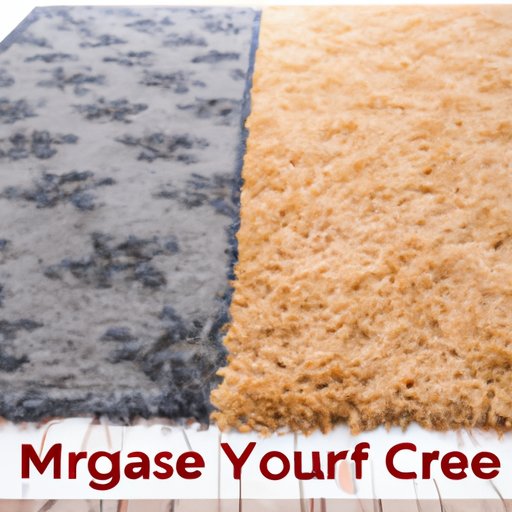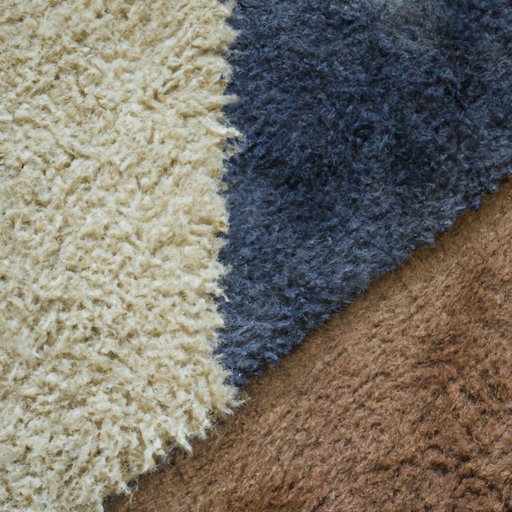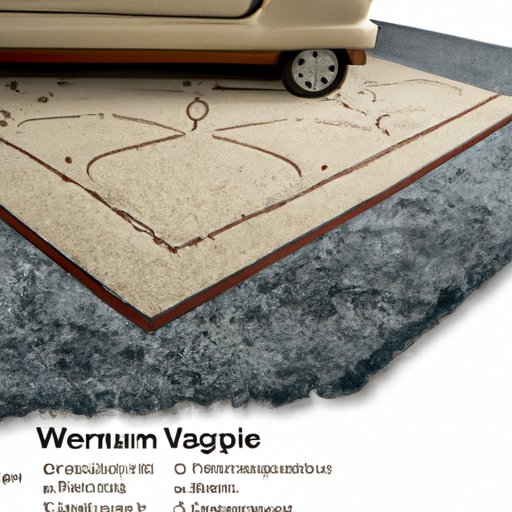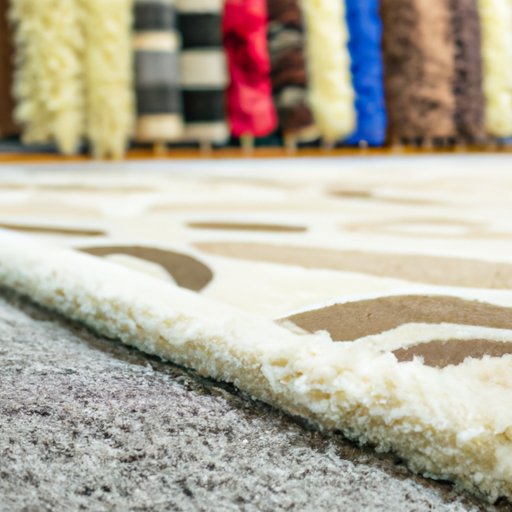Introduction
Carpeting is an investment that can significantly improve the look and feel of any room. When selecting a new carpet, it’s important to take into account all the associated costs, from the initial purchase price to installation and maintenance. Understanding the factors that influence carpet costs can help you make the best possible decision for your budget.

Comparing Carpet Costs: What You Need to Know
When determining the cost of carpet, it’s important to consider several key factors. According to the National Association of Home Builders, “The two main components of carpet cost are material and labor. The material cost of carpet is based on the type of fiber used and other features such as stain resistance. Labor costs depend on the size of the area being carpeted and the complexity of the installation.”
The quality of the materials used in the carpet will also affect the price. While higher-end fibers may be more expensive upfront, they can provide long-term savings since they are often more durable and require less frequent replacement. As with most purchases, it’s important to shop around and compare prices to ensure you’re getting the best value for your money.

The Pros and Cons of Different Types of Carpeting
Carpets can be made from a variety of fibers, including wool, nylon, polyester, olefin, and triexta. Each has its own pros and cons, so it’s important to weigh these against your needs and budget. Wool carpets tend to be more expensive than synthetic fibers, but they offer superior softness, insulation, and durability.
Nylon is the most popular choice for carpets because it’s strong, resilient, and easy to clean. Polyester carpets are usually less expensive than nylon, but not as durable. Olefin carpets are extremely durable and resistant to staining, but they don’t have the same softness and comfort as wool or nylon. Triexta is a newer type of fiber that offers good stain resistance, softness, and affordability.
How to Estimate the Cost of Carpet Installation
Installation costs vary depending on the size of the area being covered and the complexity of the job. To estimate the cost of carpet installation, you’ll need to first calculate the total square footage of the space. This can be done by measuring the length and width of the room and multiplying them together. Once you have the total square footage, you can then add in labor costs, which typically range from $1 to $3 per square foot.
In some cases, there may be additional fees for moving furniture, removing old carpet, or installing special features such as stair runners. It’s important to understand these costs ahead of time, so you can factor them into your overall budget.
Exploring Carpet Prices Based on Size, Quality, and Style
The size of the carpet will also impact the cost. Standard sizes include 12 feet by 15 feet, 12 feet by 18 feet, and 12 feet by 21 feet. Carpet grades can also affect the price, with higher grades offering thicker, softer fibers and better stain protection. Popular styles include plush, Berber, and frieze.
When it comes to carpeting, the price you pay reflects the quality of the product. Higher-end carpets tend to be more expensive, but they can last longer and require less maintenance. If you’re looking for a more affordable option, there are plenty of mid-range carpets available that offer good performance and a pleasing aesthetic.
Carpet Shopping Tips for Finding the Best Deals
Shopping for carpet can be overwhelming, but there are a few steps you can take to ensure you get the best deal. First, research installers in your area and ask for quotes. You can also use online resources such as Consumer Reports to compare prices and read reviews. Finally, make sure to compare apples to apples and look at the quality of the carpet, not just the price.
An Overview of Carpet Cleaning Costs
Regular cleaning is essential to keeping carpets looking their best. Professional cleaning services typically charge by the square foot, with rates ranging from $0.35 to $0.50. DIY cleaning solutions are generally cheaper, but may not be as effective. Depending on the type of carpet and the amount of traffic, carpets should be cleaned every six months to a year.

Understanding Carpet Warranties and Pricing Structures
When shopping for carpet, it’s important to understand the warranty policies offered by both manufacturers and retailers. Most manufacturer warranties cover defects in materials and workmanship, while retailer warranties often cover installation issues. Additionally, some stores may offer financing options that allow you to spread out the cost of your purchase over time.
Conclusion
Carpeting can be a great way to improve the look and feel of any room, but there are many factors to consider when determining the cost. From materials and labor to installation and maintenance, understanding the various costs associated with carpets can help you make the best decision for your budget. By researching installers, using online resources, and comparing prices, you can find the perfect carpet for your home without breaking the bank.
(Note: Is this article not meeting your expectations? Do you have knowledge or insights to share? Unlock new opportunities and expand your reach by joining our authors team. Click Registration to join us and share your expertise with our readers.)
